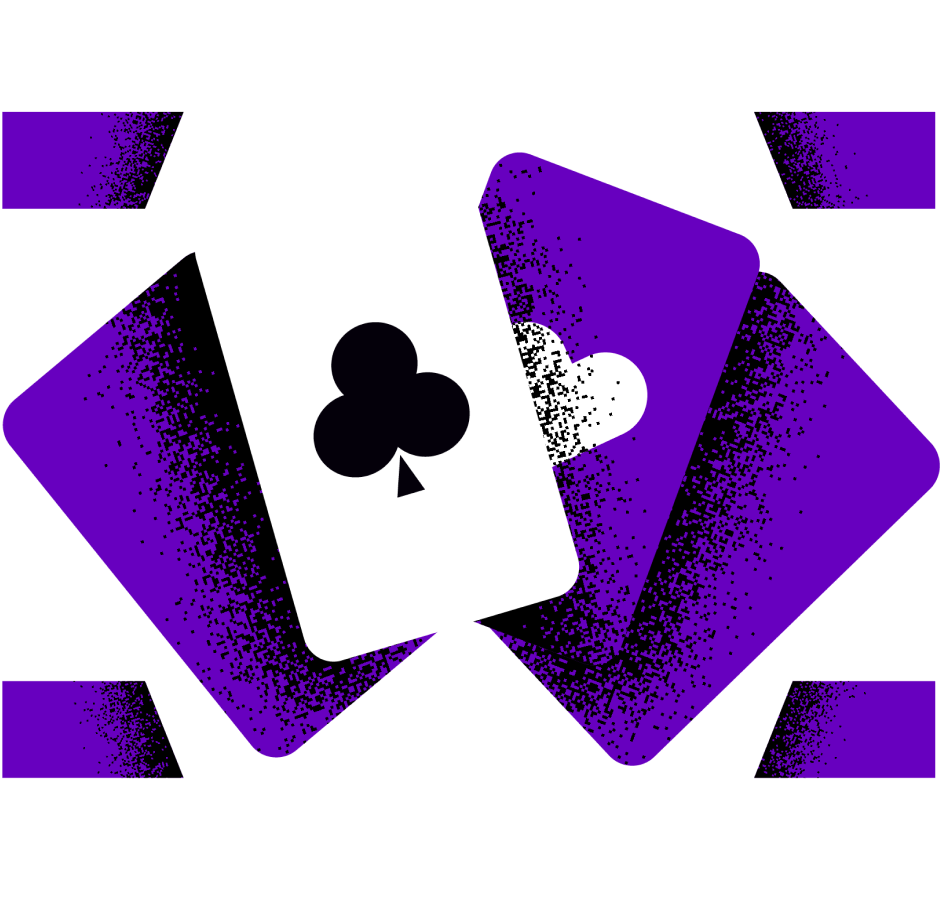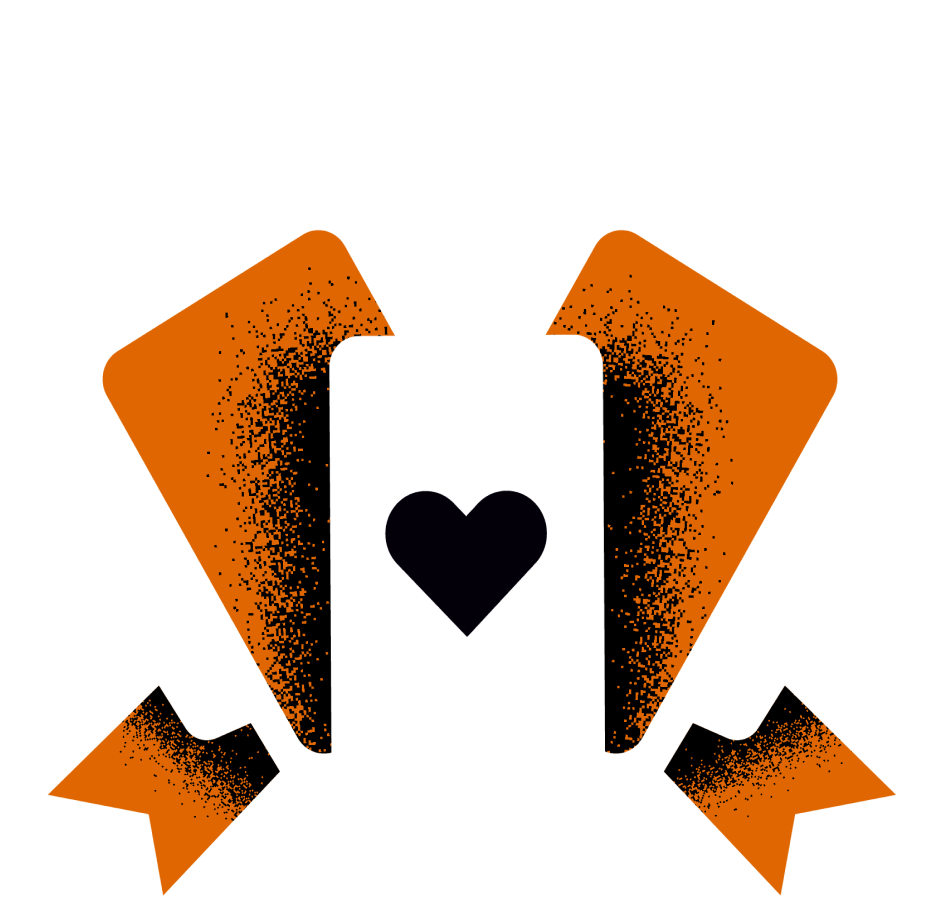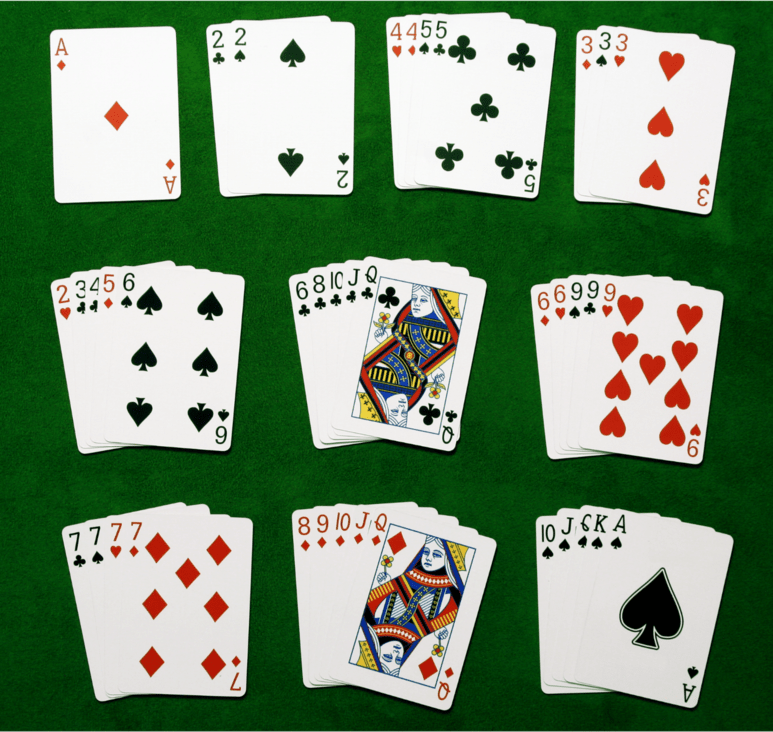
Poker Hands Ranking Chart
The emergence of online poker has brought the game closer and made it more accessible to people around the world. A digital poker table with real people playing for real money and getting the better of each other is just two clicks or taps away.
Also, there are more and more resources and educational content on poker that helps newbies become decent players and makes decent players become world-class professionals competing on the highest level.
Why start playing poker?
The game has grown, not just in terms of the number of players, but in terms of quality as well. It’s probably never been more exciting and more competitive, but new players and those who are still yet to test their poker skills shouldn’t get discouraged by this. The choice of websites and apps you can use to play poker has never been so broad so everyone can find a place where they can play games that suit their experience and knowledge of the game.
This goes for complete beginners as well. Poker has been a source of income and entertainment for so many people around the world now, that it makes sense to invest some time in learning how the game works. However, if that’s the case, you need to start somewhere.
And the best place to start is getting familiar with poker hand rankings.
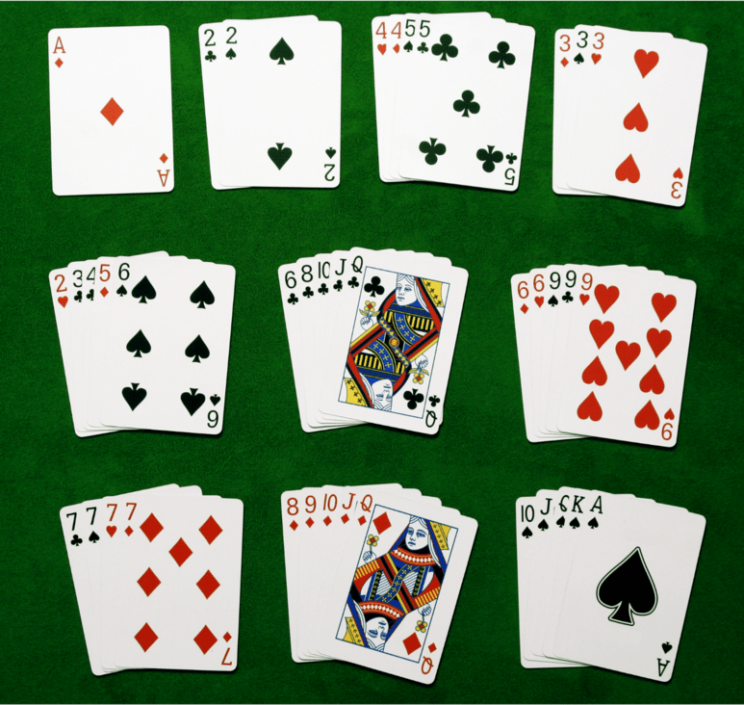
Poker hand strength chart
First of all, it’s worth mentioning that there are countless variations of poker today. Literally countless – it’s impossible to keep track of every new variant that emerges and the nature of the game is such that we’ll see more and more of them in the future.
Moreover, every kind of poker can be played in numerous different ways, with different limits, a different number of cards in players’ hands, or other variable details that players can determine between themselves before the start of the game.
However, what remains the same in a large majority of these variants are hand rankings. Also, in most variants the goal is to connect 5 strong cards – sometimes you get only 5 cards in total, and sometimes you’ll get 7, 8, or more, only to choose 5 that will let you connect the strongest possible hand.
So let’s check out what these rankings look like in detail, from the strongest to the weakest ones.
Royal flush
The strongest hand in poker is a royal flush. It means you end up with 5 highest-ranked cards of the same suit. An example would be 10♥, J♥, Q♥, K♥, A♥, and there are obviously 4 different ways to draw this hand because there are 4 different suits.
It should be said right away that suits in poker all have the same value, so it doesn’t matter if you get the clubs, hearts, diamonds, or spades. However, connecting any of the possible 4 royal flushes is extremely rare.
In 5-card games, you have a 649,379:1 chance of drawing a royal flush, while in 7-card games (which include Texas hold ‘em, the most popular version of poker) your chances get a bit higher – 30,939:1, but this is still not a hand you’ll often see in any variant of poker.
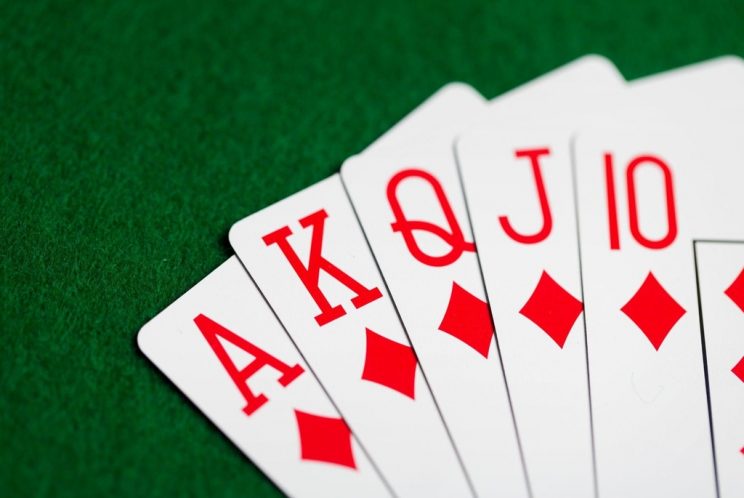
Straight flush
Straight flushes are also extremely hard to connect. Namely, a straight flush entails connecting 5 cards of the same suit in sequential order, but without the condition that these have to be the 5 highest-ranking cards. In a way, a royal flush is just the best possible version of a straight flush.
So in case you draw any 5 adjacent cards of the same suit, you’ve got a straight flush. This includes hands like 3♦, 4♦, 5♦, 6♦, 7♦, or 8♠, 9♠, 10♠, J♠, Q♠.
But what happens if two or more players have a straight flush? In that case, the winner is the one with the highest high card. In our two examples above, the diamond straight flush has a 7 as a high card, and the club straight flush has a Q. As Q is a higher card than a 7, the player with the straight flush of clubs would be the winner. In the extremely rare case of having two players with straight flushes with the identical high card, the pot is split between those two.
Four of a kind
Although there’s a common representation of four aces being the strongest possible hand in poker, it’s actually only the third strongest. Four of a kind simply means you have 4 cards of the same rank. Examples include 5♣, 5♠, 5♦, 5♥, or 6♣, 6♠, 6♦, 6♥, and so on – you get the point.
Again, if two or more players connect four of a kind, the tie-breaker is the rank of their cards. So 6s would beat 5s, Qs beat Js and there’s no chance that two players can get identically-ranked four cards each. Or if that happens, you should probably check the deck you’re playing with or players’ sleeves.
You may have noticed that this is the first hand where not all 5 cards are used. The remaining card, as well as any card that remains unconnected, is called the “kicker” and in some cases they play a role of an ultimate tie-breaker, but we will explain that later. In a four-of-a-kind hand, the fifth card is completely irrelevant.
Full house
Next up is a full house, another hand in which you need to use all 5 cards. To get a full house, you have to connect three cards of identical rank and another two cards of identical rank, but not the same rank as the first three (which would be impossible anyway). It may sound confusing, but it’s actually very simple in practice.
Examples of a full house would be 4♣, 4♠, 4♦, J♥, J♦, or 10♦, 10♠, 10♥, 7♣, 7♦. In the case of multiple players connecting a full house, you should first check who’s got the highest-ranked trips. So in this case the player with 10s and 7s wins as 10 beats 4.
In 5-card games, two players can’t have identical trips, however, in some other variants with more cards, it’s possible that both players have full houses with the same triples. In that case, we look at the remaining pair of cards. So in the case of player A connecting 8, 8, 8, 5, 5, and player B connecting 8, 8, 8, K, K, player B wins.
You can even come across cases where both players with full houses have fully identical hands. In Texas hold ‘em, for instance, players A and B can both hold 9s in their pocket and they could get 9, 9, 4, 4, on the board. If this happens, they both have a full house with 9s and 4s so they split the pot.
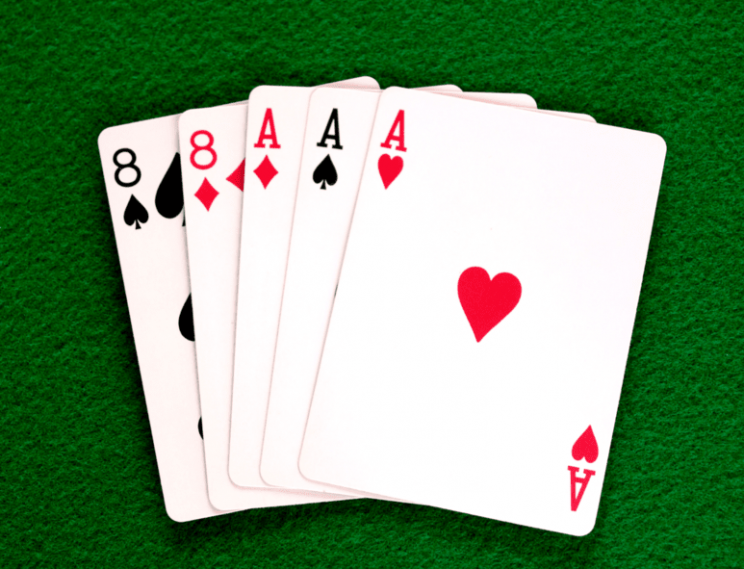
Flush
In order to easily remember what’s a flush and what’s a straight (we’ll get to straights in a second), just remember that a straight flush is composed of these two. The first, stronger element – a flush – represents any 5 cards of the same suit.
So a 3♥, 5♥, 8♥, J♥, A♥ would be a flush, as well as 2♠, 7♠, J♠, Q♠, K♠. As always, all suits have the same strength. But if multiple players hold a flush, the winner is the one with the highest high card. So out of the two examples above, the flush of hearts beats the flush of spades.
In the case where the highest card is the same, the tie-breaker is the second-highest card. So if player A holds 2, 6, 8, 10, Q, and player B holds 3, 4, 6, 7, Q, player A wins as 10 beats 7. If the second-highest card is also identical then we look at the third-highest card, and so on.
If both players have the exact same cards, the pot is split between them.
Straight
As we just mentioned, the second element of a straight flush is, obviously, a straight. A straight is connected when a player holds 5 cards of any suit that are arranged in sequential order.
For instance, if a player has 3♥, 4♦, 5♥, 6♠, 7♣, or a 10♠, J♣, Q♣, K♦, A♥, he has a straight. Given all the previous examples, you can assume what the tie-breaker is. Of course, it’s the highest card, so in this example from above, the winner is the player with the ace as the high card. If the highest card is identical, all the other cards are necessarily identical as well and the pot is split.
In 5-card games, the chance of a straight occurring is 253:1. However, in variants with more cards, the probability grows substantially, and in some versions of poker, such as Omaha poker, they can be quite common and they can play an important role in the players’ overall strategy.
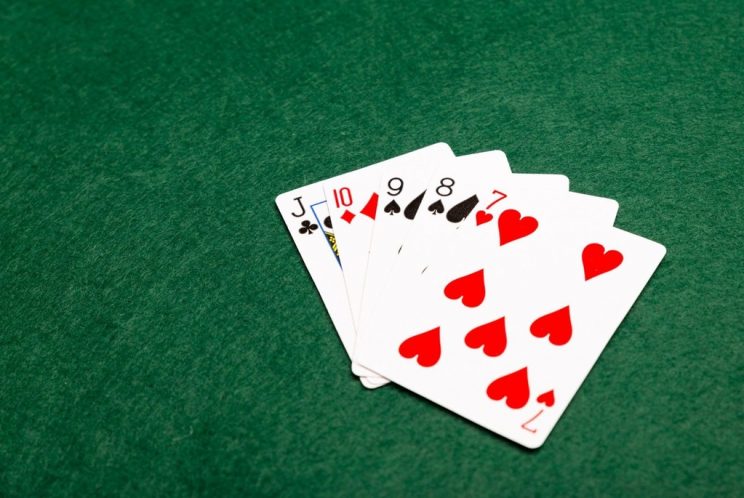
Three of a kind
Rules for connecting three of a kind are very simple – you just need to connect three cards of the same rank. Instances of three of a kind are 8♠, 8♦, 8♥, or A♦, A♣, A♠, or anything of the sort.
The rules for determining the winner when two or more players are holding a three of a kind are also rather simple and obvious. The player with the highest cards wins – in the case above, triple aces beat triple 8s.
You can easily see that a player with three of a kind still has two unconnected cards, and these decide the winner if more players have the identically-ranked three of a kind in their hands. As we already mentioned, these unconnected cards are called the kickers, they decide the winner in these cases, and we’ll get to them soon.
Two pair
A two pair is also quite a straightforward concept. Whenever a player has two pairs of cards with identical ranks, they have two pair. Obviously, these pairs of cards have to be different – otherwise, they’d have a four of a kind.
So, a player who holds a two pair can hold 4♣, 4♦, 7♥, 7♣, or 9♣, 9♥, Q♦, Q♥, or anything similar to that. The tie-breaker in cases when more players have this hand is the highest high pair. In this example, the high pairs are 7s and Qs, so the player holding the Qs wins.
Whenever both players have the same high pair, we check the low pair. So if player A holds 6, 6, J, J, and player B holds 10, 10, J, J, it’s player B who takes the pot. If both players have the same pairs of cards, then it’s up to the remaining kicker to determine the winner.
A pair
The weakest connected hand in poker is a pair. Any two cards of the same rank are considered a pair – 4, 4, or 7, 7, or A, A, or whatever of the sort. When two or more players hold pairs, the one with the highest-ranked pair wins.
In 5-card games, the probability of getting a pair is quite high – around 2.36:1. Interestingly enough, in variations with more cards, getting a pair is usually even more probable than not connecting any cards.
High card
However, there are cases where players have literally nothing. This happens only 1 in 4.74 times in 7-card games, but it does happen. And when it happens to all the remaining active players, the winner is the one with the highest high card. If all these players have the same high card, we check the second-highest, if that doesn’t help, we check the third-highest, and so on.
Kickers
Finally, we get to kickers as the ultimate tie-breakers. Kickers are unconnected cards, they are activated whenever there’s no other way to decide the winning hand, and they basically work the same way as the high card rule.
Let’s explain this with an example. Imagine that player A and player B have these hands:
A: K, K♥, 7♦, 7♣, Q♦
B: K♠, K♣, 7♥, 7♠, 5♠
As you can see, both players have a pair of Ks and a pair of 7s and there’s no way to distinguish between them. In this case, the winner is the player with the higher-ranked kicker, in this case, player A, who has a Q as a kicker. Had both players had the same kicker, they would’ve split the pot.
However, in cases when there is more than one kicker, the situation gets just a bit more complicated. If the highest kicker is identical, then the second-highest one is taken into account. For instance:
A: 9♠, 9♦, K♦, 10♠, 4♣
B: 9♣, 9♥, K♥, 8♦, 5♣
Here, both players have a pair of 9s and a K as their highest kicker, but player A takes the pot as he has the second-highest kicker. Of course, had the second kicker been the same, the third one would decide the winner, and if they have identical hands, the pot is split.
Alternative rankings in poker
It’s important to mention that there are alternative rankings in some variants of poker, but they normally rely on the ranking system we described.
For instance, lowball poker basically takes this system and turns it upside-down. In different versions of lowball poker, players need to get the weakest hand possible in order to take the pot. Some specific rules and details may vary, but this is the gist of it.
There are also variations of poker that use the high-low system, where half of the pot is taken by the player with the strongest hand and the other half is taken by the player with the weakest hand. This brings an additional dimension to the game, especially in versions of poker where you have a large number of cards to choose from, such as Omaha.
We’ll dedicate more time to these alternative rankings in one of our future articles.
We hope this article helped you understand how poker works on an elementary level and that it brought you a bit closer to the beautiful game. Of course, getting truly familiar with poker means much more than simply learning the basic hand rankings, but it’s a good start.
If you’re intrigued by the looks of poker, it makes sense to dig deeper and keep learning, and you can rely on resources on our blog in this process. Take your time to study the game, and whenever you feel ready, you can register on Coinpoker and start playing!

